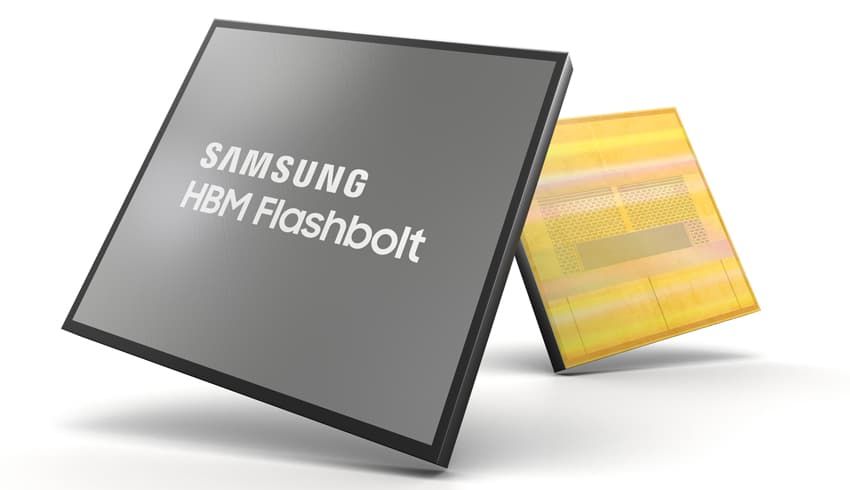
Samsung Electronics Co., Ltd. released the third-generation of its High Bandwidth Memory 2E (HBM2E), also known as “Flashbolt.” The latest generation of HBM2E is 16GB making it well suited for HPC systems while also helping with supercomputers, AI-driven data analytics, and state-of-the-art graphics systems. Aquabolt will continue to be produced while this generation is in production.
The previous generation, Aquabolt, had a capacity of 8GB. Flashbolt hits 16GB by vertically stacking eight layers of 10nm-class (1y) 16-gigabit (Gb) DRAM dies on top of a buffer chip. Furthermore, Flashbolt is interconnected in a precise arrangement of more than 40,000 ‘through silicon via’ (TSV) microbumps, with each 16Gb die containing over 5,600 of these microscopic holes. For performance, Samsung states that the latest generation can hit reliable data transfer speed of 3.2 gigabits per second and memory bandwidth of 410GB/s per stack. This is quite an improvement over the last generation’s 307GB/s.
Availability
Samsung expects to begin volume production during the first half of 2020.
Engage with StorageReview
Newsletter | YouTube | Podcast iTunes/Spotify | Instagram | Twitter | Facebook | RSS Feed

